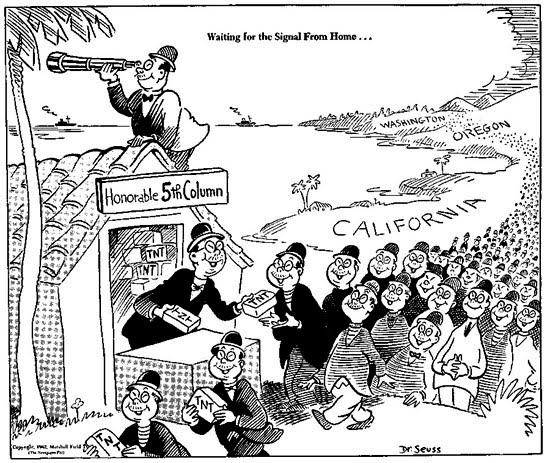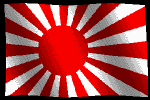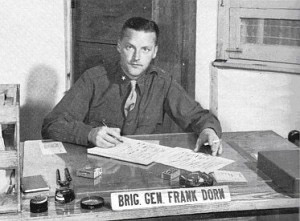General Recalls US West Coast Confusion after Pearl Harbor Attack
 DC politicians and the military brass knew a Japanese attack was coming about December 7, 1941. They just didn’t know where. Embargoes and other forms of economic “diplomacy” had pushed the Rising Sun Empire against the wall. Europe was already on a war footing.
DC politicians and the military brass knew a Japanese attack was coming about December 7, 1941. They just didn’t know where. Embargoes and other forms of economic “diplomacy” had pushed the Rising Sun Empire against the wall. Europe was already on a war footing.
Better-educated citizens on the West Coast could put two-and-two together as well. Just as jihadists today think nothing of shooting missiles from within mosques and other civilian areas, few Americans living near the Pacific doubted that Japan would plant spies and saboteurs within otherwise peaceful, but self-segregated Japanese-American communities.
 The Dr. Seuss cartoon perhaps reveals some of the panic that Americans felt when it was thought that an invasion was imminent. Internment camps upset lives and caused inconvenience, but the protection of Japanese-Americans was also a motive. Peacetime Americans today may disapprove in retrospect, but countries facing homeland attacks won’t think twice about such ethnic profiling.
The Dr. Seuss cartoon perhaps reveals some of the panic that Americans felt when it was thought that an invasion was imminent. Internment camps upset lives and caused inconvenience, but the protection of Japanese-Americans was also a motive. Peacetime Americans today may disapprove in retrospect, but countries facing homeland attacks won’t think twice about such ethnic profiling.
According to Frank Dorn’s World War II memoir Walkout: With Stilwell in Burma, Major General Joseph W. Stilwell commanded the Third Army Corps out of the Presidio in Monterey and Frank Dorn was his aide-de-camp and public relations officer. Following the attack on Pearl Harbor, they were together in the California Hotel in San Bernardino, then the headquarters for the Southern Sector of the Western Defense Command. Dorn picked up a long-distance call from the Fourth Army Headquarters in San Francisco:
 Listening to the distant voice, I burst out with “What?” in a tone that chilled the assembled officers into silence. “Let me repeat that back so I get it straight,” I continued. “The main Japanese fleet is streaming at full speed toward the coast of California? They’re now a hundred and fifty miles west of Monterey?’”
Listening to the distant voice, I burst out with “What?” in a tone that chilled the assembled officers into silence. “Let me repeat that back so I get it straight,” I continued. “The main Japanese fleet is streaming at full speed toward the coast of California? They’re now a hundred and fifty miles west of Monterey?’”
“Good God!” Stilwell exclaimed. “That does it. Are you sure you got that right, Dorn?”
”You heard me repeat it back, sir.”
“Christ! And nothing but the Marine Division to defend three hundred miles of coastline, small arms ammunition for no more than a few hours of combat, practically no artillery ammo.”
A breakneck drive to Stillwell’s San Bernardino headquarters was followed by frantic telephone calls to Washington for troops, for ammunition, for anything. During one call, Stilwell roared into the mouthpiece: “Good God, man! You’ll do the best you can! What the hell am I supposed to do? Fight ‘em off with oranges?”
Ammunition on commandeered streamliner trains arrived from the eastern depots: small arms, but damned little artillery. “We’ve got the guns. But only six rounds of one-fifty-five shells?” Stilwell asked me incredulously.
“Hell’s bells,” I grumbled. “Six rounds won’t be enough to pass out as souvenirs.”
That night a correction of the “intelligence” report from Fourth Army Headquarters quieted jangled nerves. “Report of approaching Japanese fleet in error. Now identified as fourteen trawlers of the Monterey fishing fleet speeding home for shelter.”
As he read the “flimsy,” Stilwell almost bit his cigarette holder in half.
“This is what they call intelligence?” he snorted. “Aaaah! Well, that’s over anyway. Now let’s get at this business of Mexico. Just how do we defend Lower California and the whole damned Mexican border? What the hell with?”
 DC politicians and the military brass knew a Japanese attack was coming about December 7, 1941. They just didn’t know where. Embargoes and other forms of economic “diplomacy” had pushed the Rising Sun Empire against the wall. Europe was already on a war footing.
DC politicians and the military brass knew a Japanese attack was coming about December 7, 1941. They just didn’t know where. Embargoes and other forms of economic “diplomacy” had pushed the Rising Sun Empire against the wall. Europe was already on a war footing. The Dr. Seuss cartoon perhaps reveals some of the panic that Americans felt when it was thought that an invasion was imminent. Internment camps upset lives and caused inconvenience, but the protection of Japanese-Americans was also a motive. Peacetime Americans today may disapprove in retrospect, but countries facing homeland attacks won’t think twice about such ethnic profiling.
The Dr. Seuss cartoon perhaps reveals some of the panic that Americans felt when it was thought that an invasion was imminent. Internment camps upset lives and caused inconvenience, but the protection of Japanese-Americans was also a motive. Peacetime Americans today may disapprove in retrospect, but countries facing homeland attacks won’t think twice about such ethnic profiling. Listening to the distant voice, I burst out with “What?” in a tone that chilled the assembled officers into silence. “Let me repeat that back so I get it straight,” I continued. “The main Japanese fleet is streaming at full speed toward the coast of California? They’re now a hundred and fifty miles west of Monterey?’”
Listening to the distant voice, I burst out with “What?” in a tone that chilled the assembled officers into silence. “Let me repeat that back so I get it straight,” I continued. “The main Japanese fleet is streaming at full speed toward the coast of California? They’re now a hundred and fifty miles west of Monterey?’”